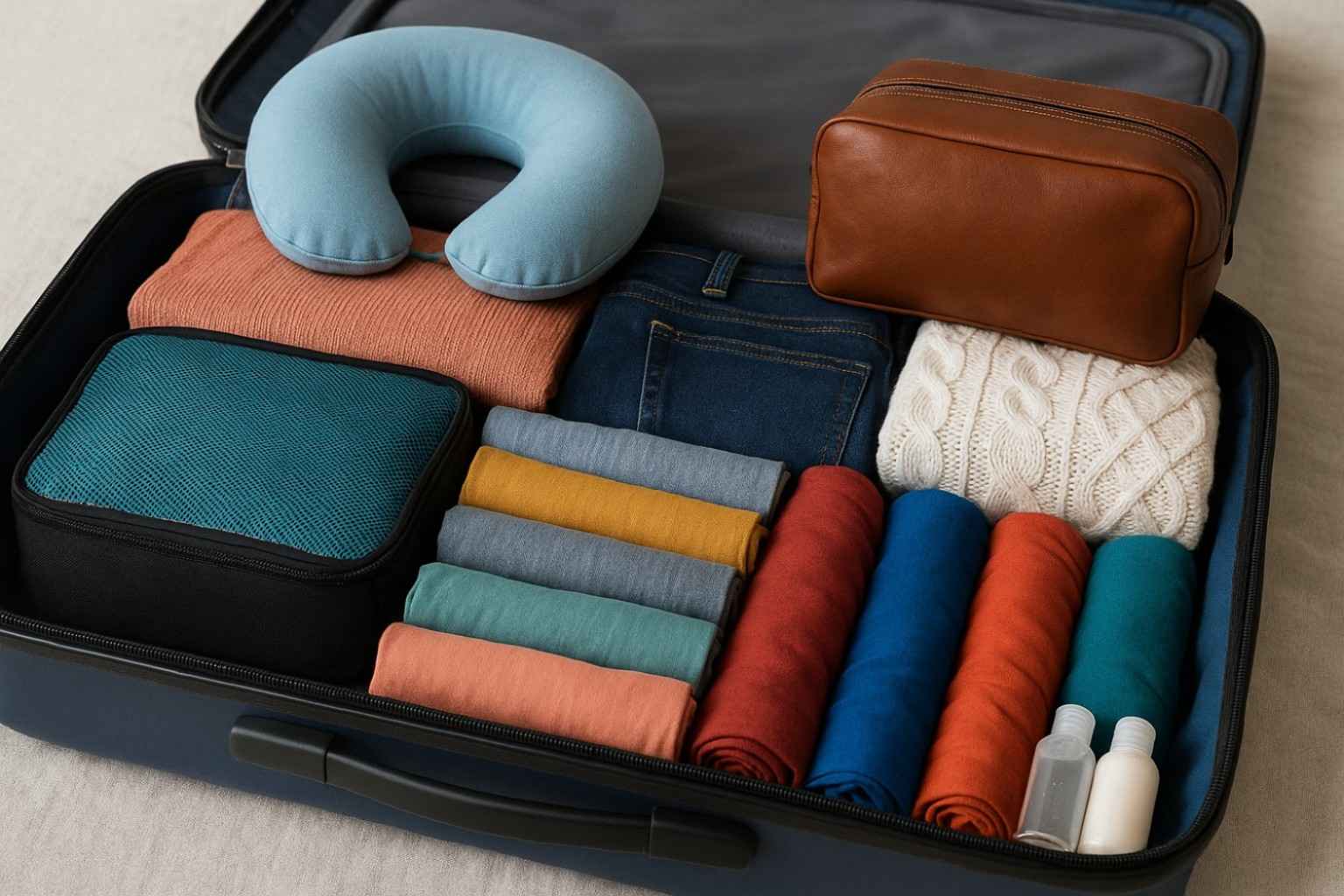Mastering the art of packing can make every trip smoother, lighter, and more enjoyable. From cramming more outfits into a small carry-on to keeping essentials accessible, clever space saving packing strategies help travelers avoid stress and save money on luggage fees. Efficient packing isn’t just about saving space—it’s about having everything you need, organized and ready to go. Here are the best space saving travel hacks to transform the way you pack for your next adventure.
1. Roll, Don’t Fold: The Ultimate Clothing Hack
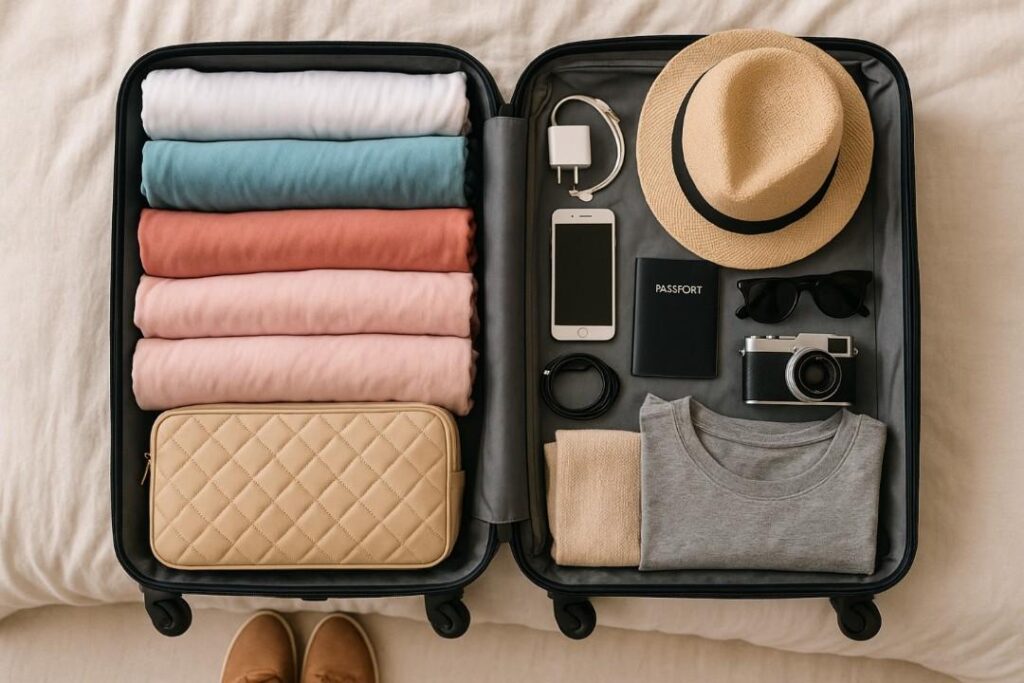
Rolling clothes instead of folding them is a game-changer for maximizing suitcase space. This technique not only compresses clothing, allowing you to fit more items, but it also reduces wrinkles compared to traditional folding. For bulkier items like jeans and sweaters, rolling makes them easier to stack or tuck into corners. Lightweight items, such as t-shirts and dresses, become compact rolls that can be layered side by side, filling every nook of your bag.
Frequent travelers swear by this method for its efficiency. For an added bonus, pair the rolling method with space saving packing cubes to keep things sorted. This strategy is especially helpful when packing for multi-destination trips where easy access to outfits is a must. If you’re skeptical, try a side-by-side comparison: you’ll be surprised how much more you can fit by rolling your clothes, with extra space left for souvenirs or essentials.
2. Use Packing Cubes for Organization
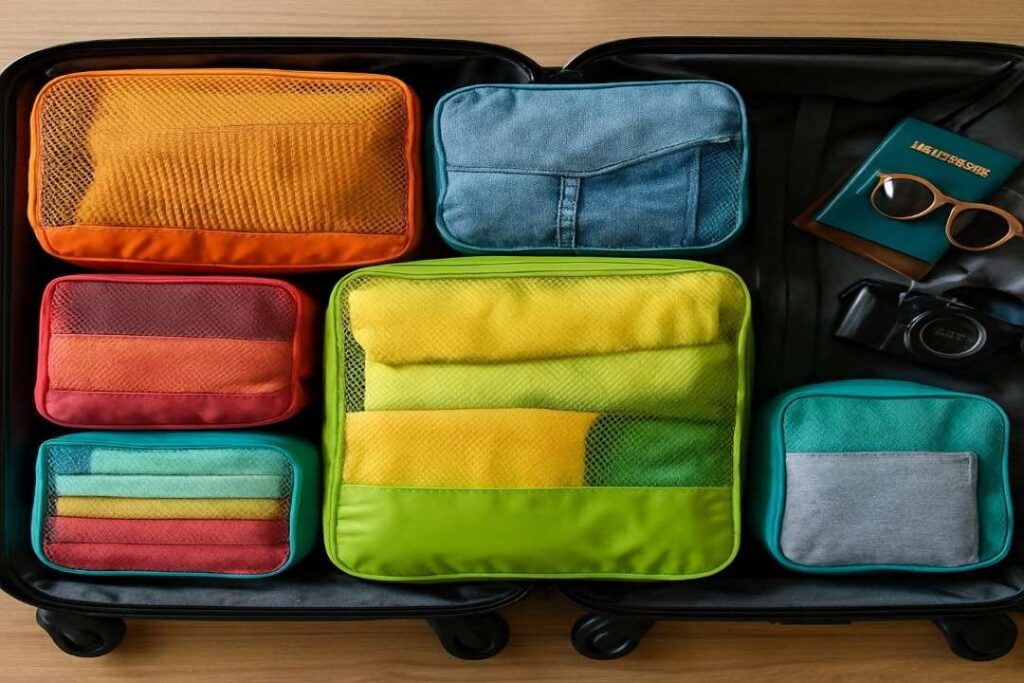
Packing cubes are a frequent traveler’s secret weapon for organization and space saving packing. These lightweight zippered pouches come in various sizes, letting you group similar items together—shirts in one, socks and underwear in another, and so on. The benefit isn’t just neatness: packing cubes help compress your clothes and reduce the space they occupy. They also make unpacking and repacking a breeze, especially during multi-stop trips.
When airport security asks you to open your bag, you won’t have to dig through a jumble of clothes—just pull out the cube you need. Some travelers even color-code their cubes for quick identification. Compression cubes go a step further by squeezing out extra air, saving even more room for bulkier items. Packing cubes also help keep clean and dirty clothes separate. For families or group travelers, cubes are a lifesaver—simply assign a color or pattern to each person. It’s an investment that pays off in time saved and stress avoided.
3. Choose Multi-Use Clothing
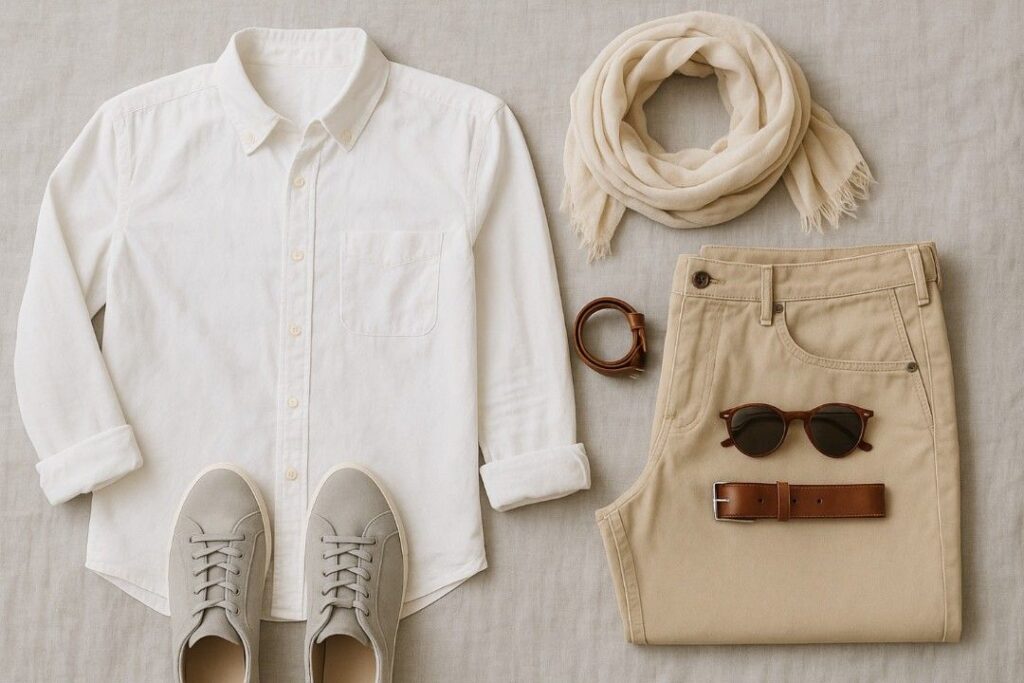
Smart travelers know that versatile clothing is key to efficient packing. Select items that can be worn in multiple settings and styled in different ways. A classic white shirt, for example, works for both sightseeing and dinner. Neutral-colored pants or skirts can match a variety of tops. Pack a lightweight scarf—it doubles as an accessory, a blanket, or even a makeshift pillow. Consider fabrics that don’t wrinkle easily and dry quickly, so you can wash and reuse them on the go.
Layering pieces like cardigans or jackets helps you adapt to different climates without bulking up your suitcase. Shoes take up significant space, so opt for pairs that are comfortable and suitable for several occasions. The capsule wardrobe approach—choosing a few key pieces that all mix and match—ensures you have endless outfit combinations without overpacking. This strategy also simplifies daily decisions, freeing up more time to enjoy your travels.
4. Fill Dead Space with Small Items
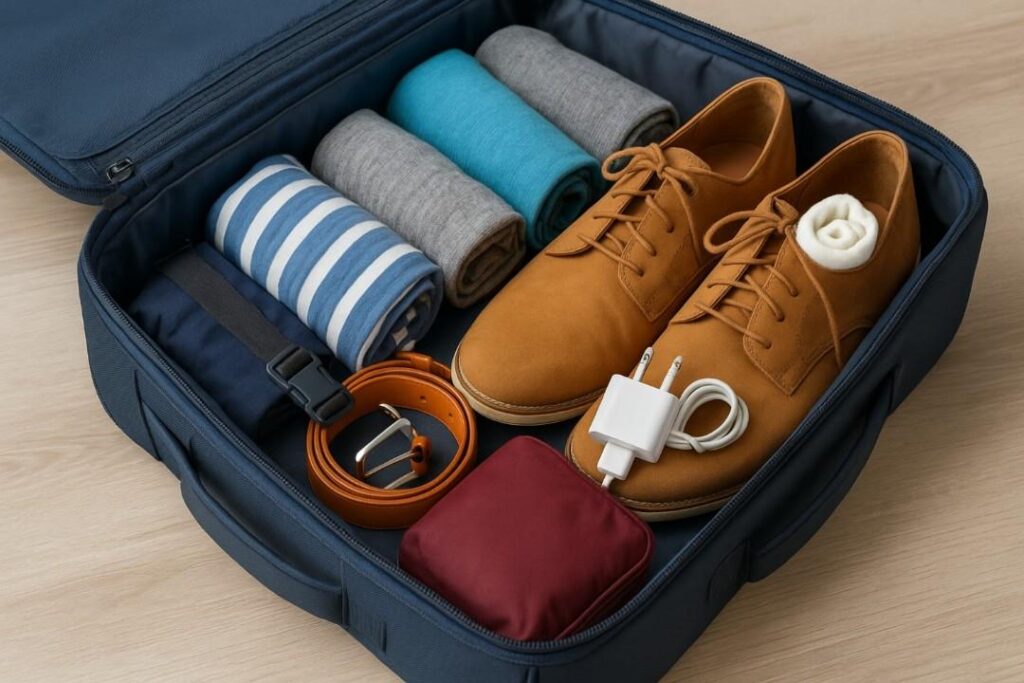
Every nook and cranny in your suitcase counts when it comes to space saving travel hacks. Shoes, for instance, often take up valuable real estate but are also the perfect place to tuck in socks, chargers, belts, or small toiletries. Rolled-up underwear, jewelry pouches, and even a swimsuit can fit neatly inside shoes, preventing them from getting crushed elsewhere. Utilize the space along the sides and corners of your bag for these smaller items to maximize every inch.
Even the handle area in rolling suitcases can hold flat objects like flip-flops or a compact umbrella. Travelers who make a habit of filling these dead spaces often find they can pack more without the bag feeling overloaded. Beyond saving space, this strategy helps protect delicate items—socks around electronics, for example, add a layer of cushioning. The trick is to think like a puzzle master: where can every small item fit securely without wasting space?
5. Use Compression Bags for Bulky Items
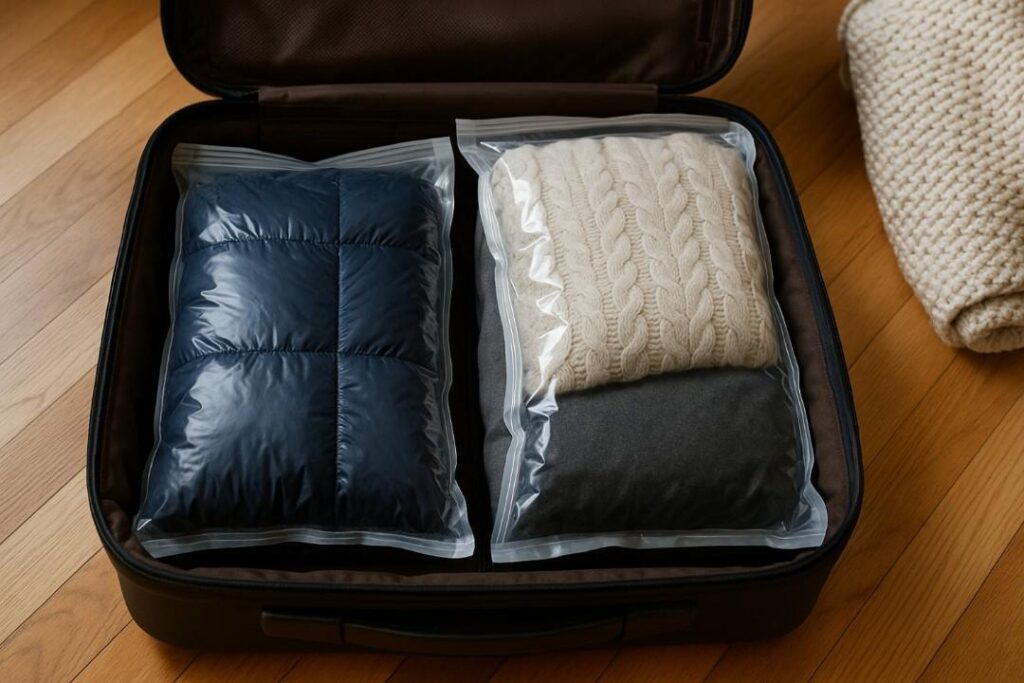
Compression bags are a lifesaver for travelers who need to pack bulky clothing like jackets, sweaters, or even extra towels. These airtight plastic bags let you squeeze out excess air, significantly reducing the volume of soft items. The result: more room in your suitcase for other essentials. Compression bags are ideal for cold-weather trips or long-term travel, when extra layers are necessary.
Simply roll or fold your items, place them in the bag, and use either a manual roll-out or vacuum-seal design to expel the air. When you reach your destination, your items will still be clean and protected from spills or rain. The only downside? Compression bags can sometimes make your bag heavier, so be mindful of airline weight limits. For short trips, smaller compression sacks can be used to separate dirty laundry on the return journey. Overall, they offer an effective way to carry more without sacrificing space.
6. Limit Shoes to the Essentials
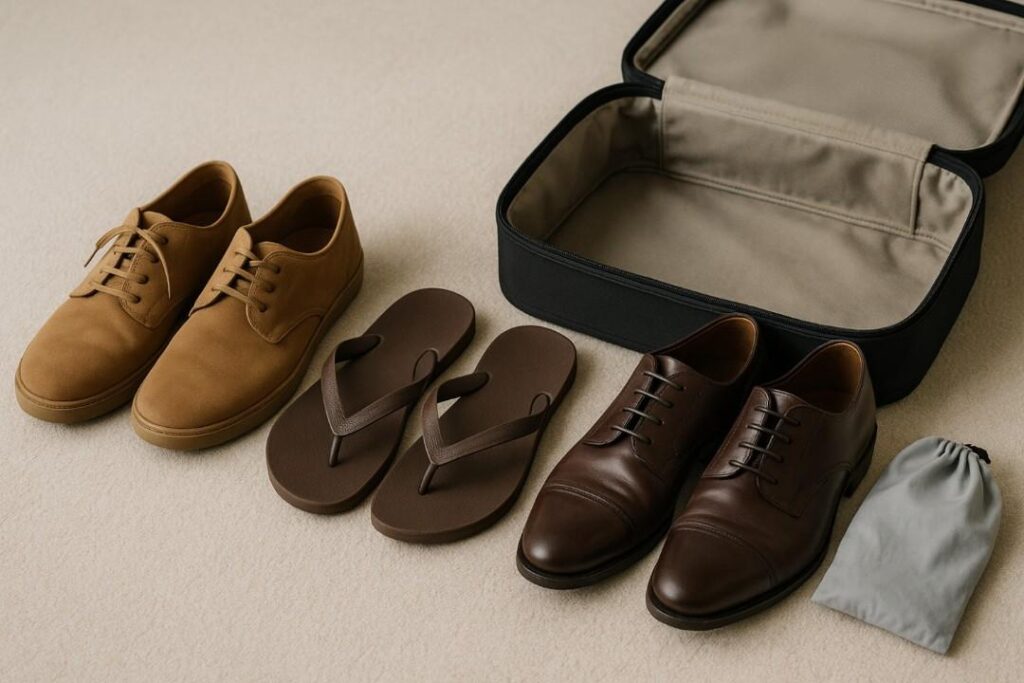
Shoes are among the bulkiest items in any travel bag, so it’s important to be ruthless when deciding what to bring. Aim to limit yourself to two or three pairs: one for walking, one for dressier occasions, and perhaps a pair of sandals or flip-flops for relaxation or showers. Choose versatile, comfortable shoes that match most of your outfits and suit your trip’s activities. Lightweight, collapsible shoes can be a great addition for travelers wanting options without the bulk.
Wear your heaviest or bulkiest pair during transit to save space in your luggage. For added organization, store shoes in drawstring bags or shower caps to keep them separate from clean clothes. Some travelers opt for shoes that can be easily cleaned or that double as both daywear and eveningwear. By minimizing your shoe selection, you’ll save precious space and reduce the weight of your bag, making every journey easier.
7. Go Miniature with Toiletries
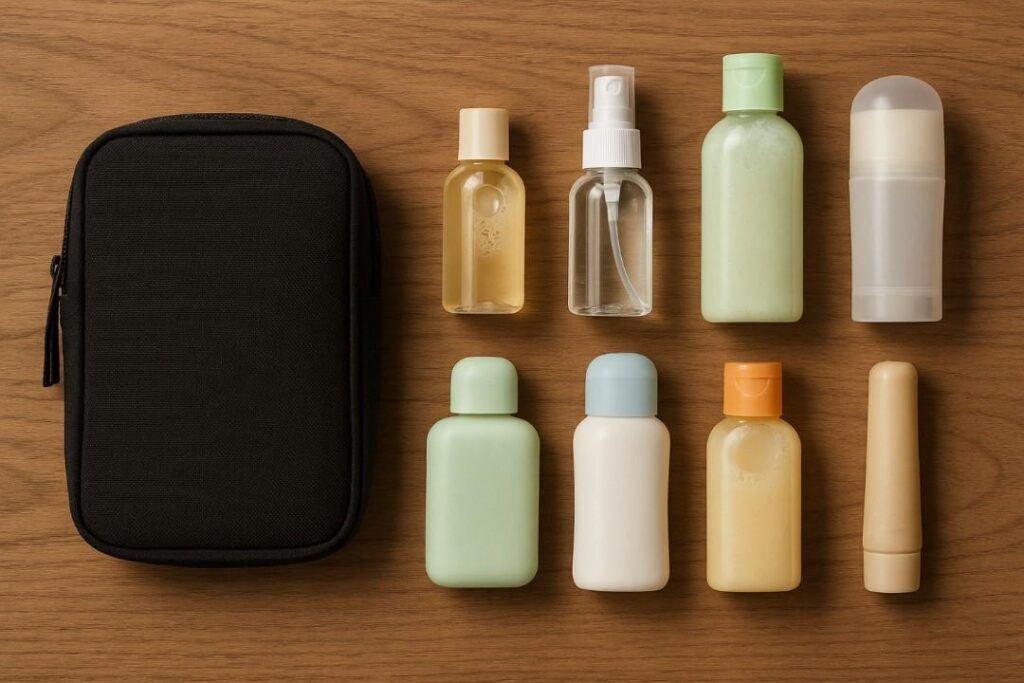
Full-sized toiletries quickly eat up space and add unnecessary weight. The solution? Travel-sized bottles and solid alternatives. Invest in reusable, leak-proof containers to decant your favorite products, ensuring you stay within airline liquid restrictions. Many stores now sell mini versions of essentials, from toothpaste and deodorant to shampoo and sunscreen. Solid toiletries—like bar soap, shampoo bars, or solid moisturizer sticks—are not only space-saving but also spill-proof and eco-friendly.
Consider multipurpose products, such as a moisturizer that doubles as sunscreen or a 2-in-1 shampoo and conditioner. To keep everything organized, use a compact toiletry bag with clear pockets for easy access at airport security. For frequent travelers, prepping a dedicated “go bag” of miniature toiletries means you’re always ready for your next trip. Embracing miniature and solid options ensures your toiletry kit is both lightweight and efficient, leaving more space for everything else.
8. Master the Art of Layering
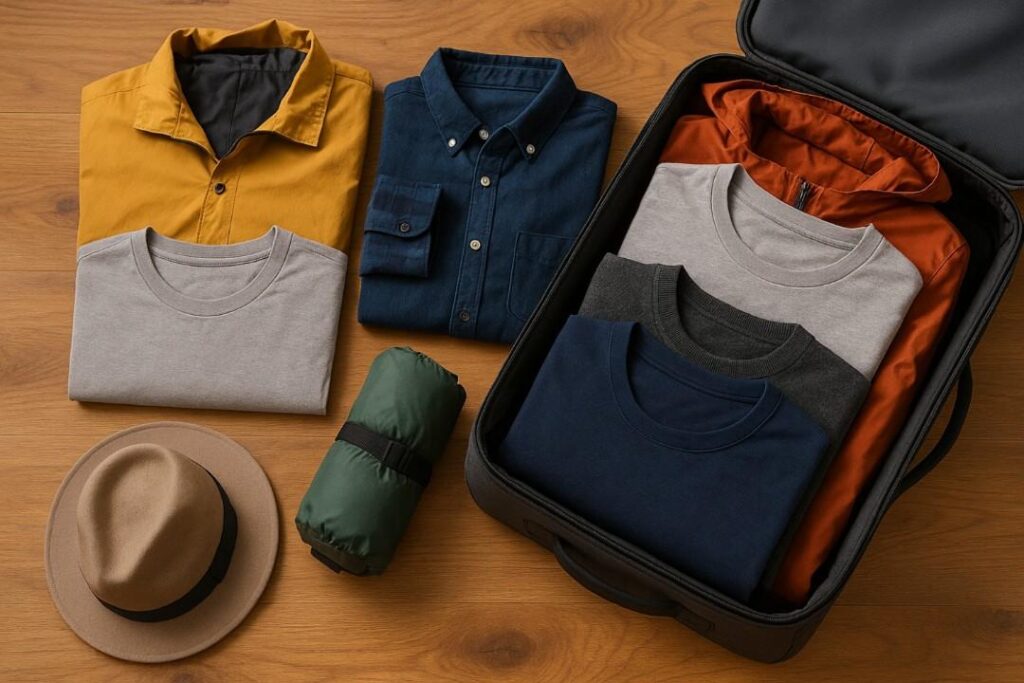
Layering is a smart technique for travelers facing unpredictable weather or varying climates. Instead of packing heavy, single-use pieces, bring several lightweight layers that can be combined as needed. For example, a base layer t-shirt, a long-sleeve shirt, a sweater, and a packable rain jacket together take up less space than a bulky coat but offer the same warmth and flexibility. Layering pieces also dry faster and can be mixed for different looks.
Consider merino wool or technical fabrics that regulate temperature, resist odors, and pack down small. This approach keeps you comfortable and stylish without overpacking. In-flight, wearing your heaviest layers can also save space and help you stay warm on chilly planes. With the right layers, you’re prepared for anything—from hot afternoons to cool evenings—without carrying a suitcase full of “just in case” outfits.
9. Downsize Your Tech and Accessories
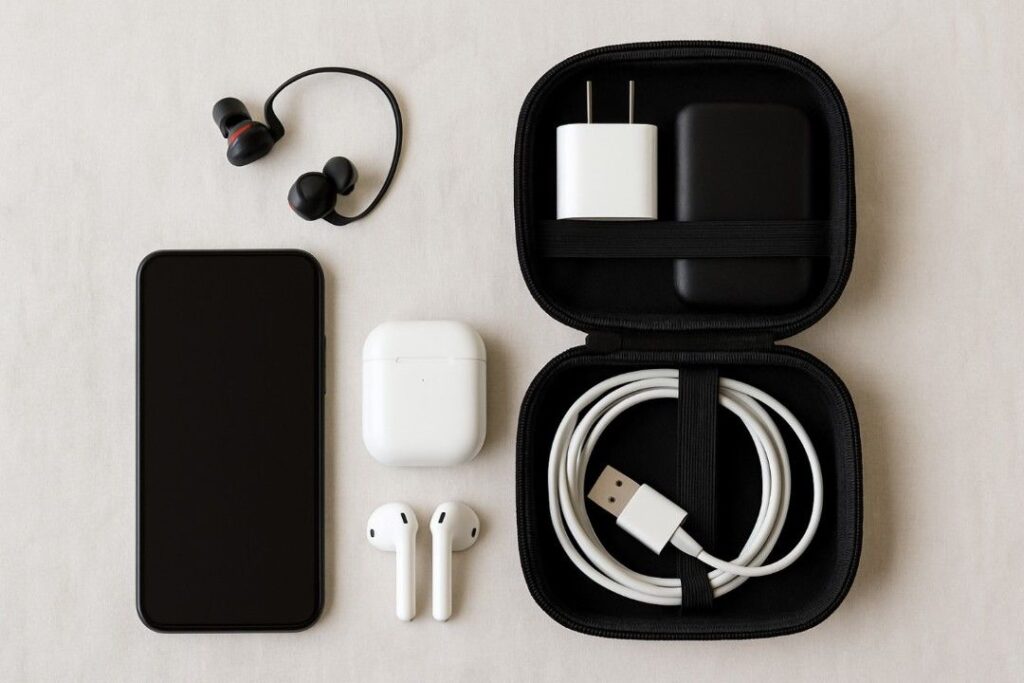
Modern travel doesn’t require lugging around every gadget. Start by evaluating what’s truly necessary—can your smartphone double as a camera, GPS, and entertainment center? Opt for multi-use devices and leave extras at home. A lightweight tablet can replace a laptop for most tasks, and a universal charger or charging cable cuts down on bulk. Noise-canceling earbuds take up less room than over-ear headphones, while a compact power bank ensures you stay charged on the go.
Store tech accessories—adapters, USB cables, memory cards—in a small pouch or organizer to prevent tangling and loss. For readers, e-books are far lighter than paperbacks. This minimalist approach not only saves space and weight but also reduces your risk of losing or forgetting expensive items. By packing only the tech you’ll actually use, you’ll keep your bag lighter and your travel experience smoother.
10. Make a Packing List and Edit Ruthlessly
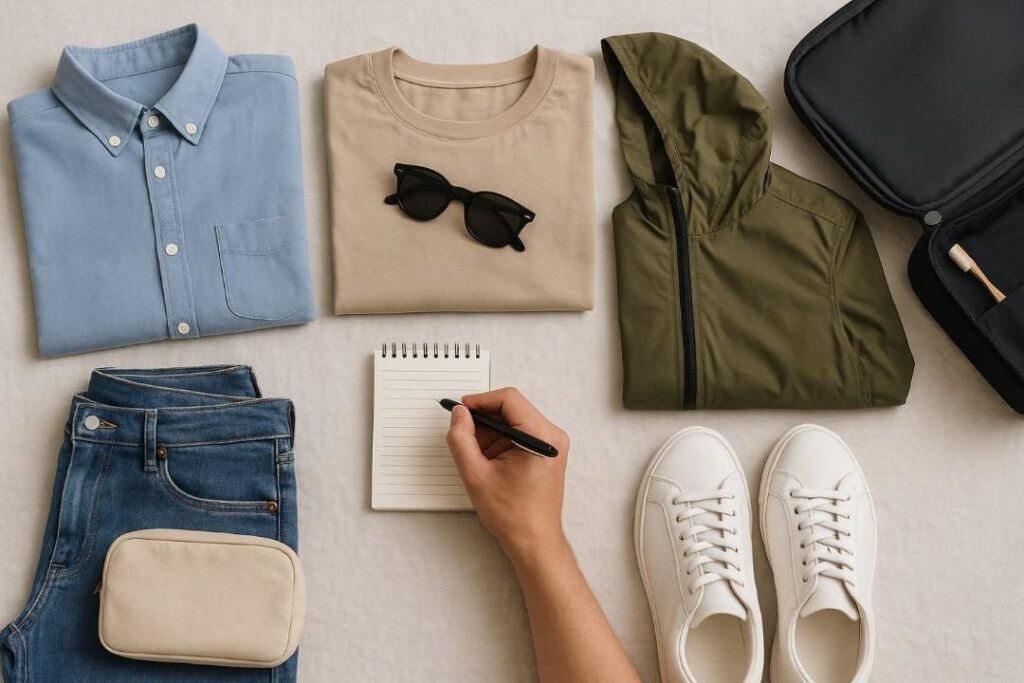
The most important travel hack? Plan ahead with a packing list—and stick to it. Start by writing down what you think you’ll need, then go through each item and ask if it’s essential or if you can do without it. Be realistic about what you’ll actually use, not what you might need “just in case.” Lay everything out before it goes in your bag, and challenge yourself to remove at least a few items.
If something doesn’t serve multiple purposes or isn’t appropriate for your destination, leave it behind. Check the weather forecast and plan outfits accordingly, limiting unnecessary extras. A well-edited packing list helps you avoid last-minute overpacking and ensures nothing important gets left out. With time, you’ll develop a personal packing system that makes every trip easier and more enjoyable. Remember: less is almost always more when it comes to travel.

